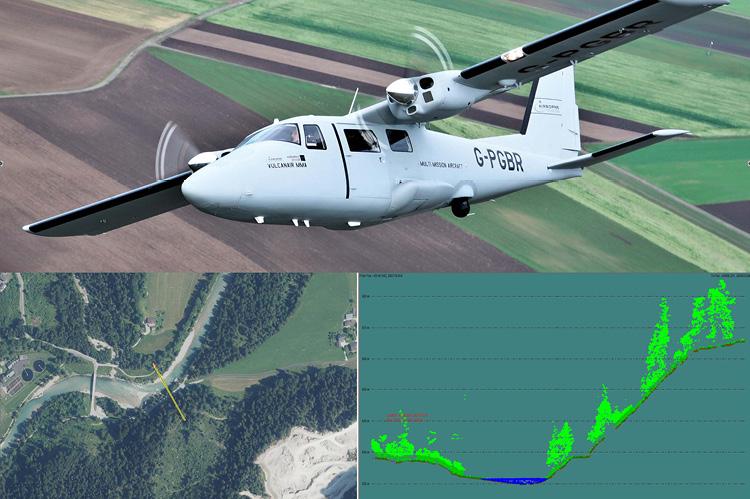River crossing and water crossing survey by airborne bathymetric laser scanning - Case study TAG

Airborne bathymetric laser scanning delivers the same results as regular airborne laser scanning, but with one major difference, this technology is able to penetrate water. The technology has matured through the past years, meanwhile it is used for the bathymetric survey of lakes, harbors, coastal shore lines and rivers.
The Trans Austria Gasleitung (TAG) is a major part of the gas supply chain for central Europe, it consists of three and mostly parallel pipelines and five compressor stations, the diameters are from 36 to 42 inch and the operating pressure is up to 70 bar. The TAG leads from the Slovakian-Austrian border to the Austrian-Italian border and crosses Austria on a length of approx. 380 km, it is composed of approx. 1,140 km pipeline in total.
Trans Austria Gasleitung GmbH, as operating company, has performed a bathymetric survey of 23 selected river crossings by airborne bathymetric laser scanning in 2017. The survey was part of several remote sensing services performed to monitor the situation at site and to update the base map data along the entire route of TAG, the river crossings are spread along TAG´s 380 km.
The technology enables a totally new approach to perform bathymetric surveys for all kind of water crossings of pipelines, such as river crossings, landfalls and other kind of water crossings. It delivers more and better information in shorter time, compared to classical procedures like terrestrial survey or echo sounding. The right approach for the survey mission ensures the capturing of all required data.
